McGill's Royal Vic makeover includes a rooftop lookout and Mount Royal path (RENDERINGS)
The public will be able to use the campus, too! 👀
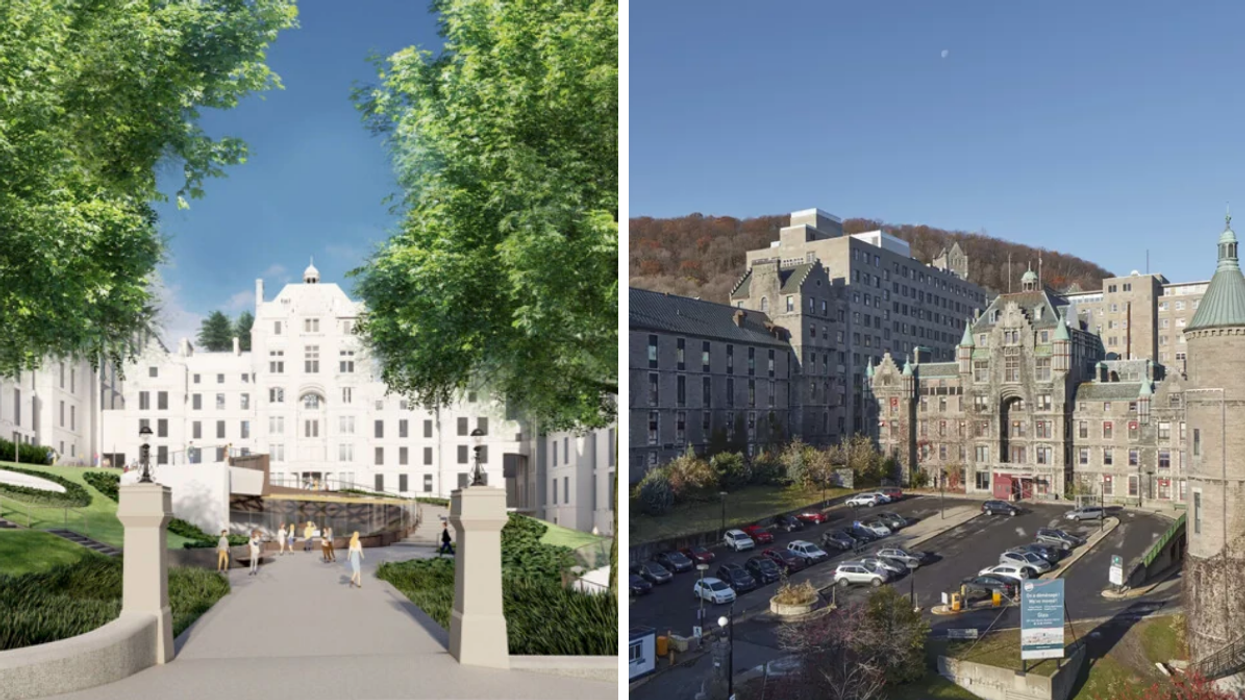
It has been almost 10 years since the Royal Victoria Hospital moved from its original digs — the iconic 19th century stone structures on the southern slope of Mount Royal — to the Glen in Notre-Dame-de-Grâce, leaving the site vacant since 2015.
But with the redevelopment officially in motion, we're finally getting more answers as to what the future of this prime piece of real estate holds. In part, the site will become a McGill University campus, with public spaces and a new pathway between downtown and Mount Royal Park.
Renderings released by landscape architecture firm CCxA and Diamond Schmitt/Lemay Michaud Architectes, who are collaborating on the $870 million redesign, give a first look at the 'New Vic' so you don't have to wait until it opens its doors in 2028.
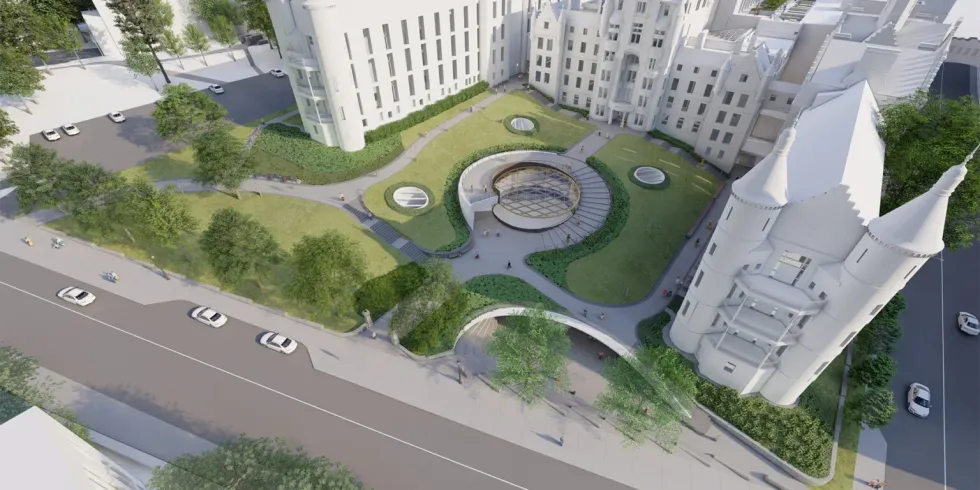
McGill's northern campus expansion involves taking over the former hospital's three main buildings: heritage pavilions A, L and E. It also includes one new construction and the demolition of three newer buildings, which would reduce the complex's overall building height by 15 metres, clearing the way for better views of the mountain.
All in all, the campus will be spread across 4.5 acres — less than 15% of the 33-acre site — which McGill says will provide the University with an additional 50,000 square metres of gross area and 800 classroom seats, helping to tackle its "space deficit."
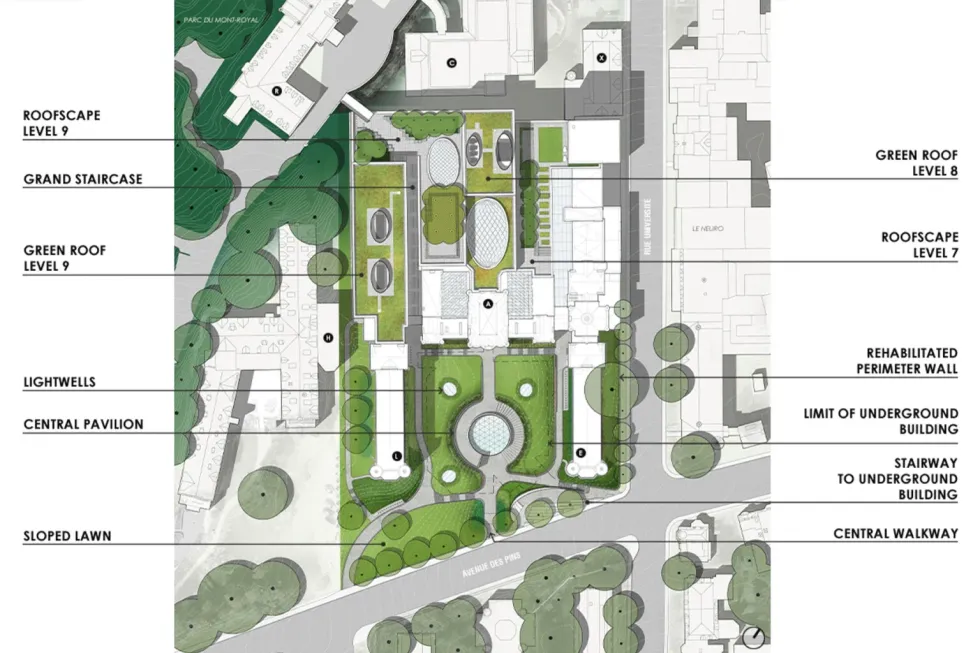
The University plans to welcome nearly 3,000 people per day to its complex, "a multidisciplinary hub for learning, research, and innovation," which will be focused on sustainable development and public policy.
According to McGill, there will be "cutting-edge teaching and learning spaces, event spaces and state-of-the-art research laboratories" as well as study spaces, green spaces, and a library.
Members of the public can expect access to walkways, cafés, restaurants, public lecture and event spaces, and a rooftop lookout with a view of the Montreal skyline
Regardless of whether or not you're part of the McGill community, you'll also be able to use the campus as an extension of the Promenade Fleuve-Montagne, allowing you to cut between avenue des Pins and the mountain.
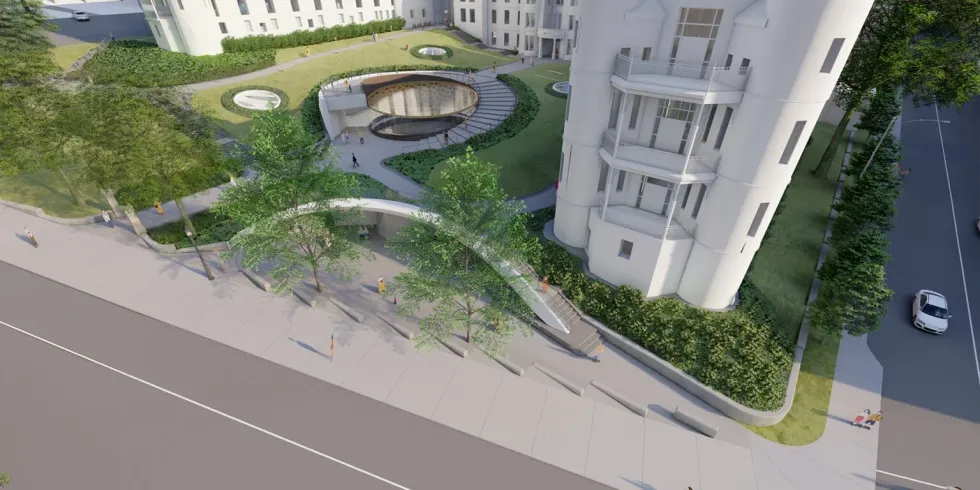
In terms of the overall design, CCxA says it is actually borrowing a number of principles from Frederick Law Olmsted, the landscape architect who designed Mount Royal Park in 1872.
Renderings show the former Royal Vic's parking lot transforming into a green public square, complete with tree-lined passageways and grassy knolls.
"On these slopes, steps, accessible paths, and a transparent circular entrance pavilion are proposed," CCxA says on its website. "Other improvements such as a stepped entrance plaza, a reinterpretation of the historical circular wall, and a widening of adjacent streets all partake to realizing a connected campus fabric."
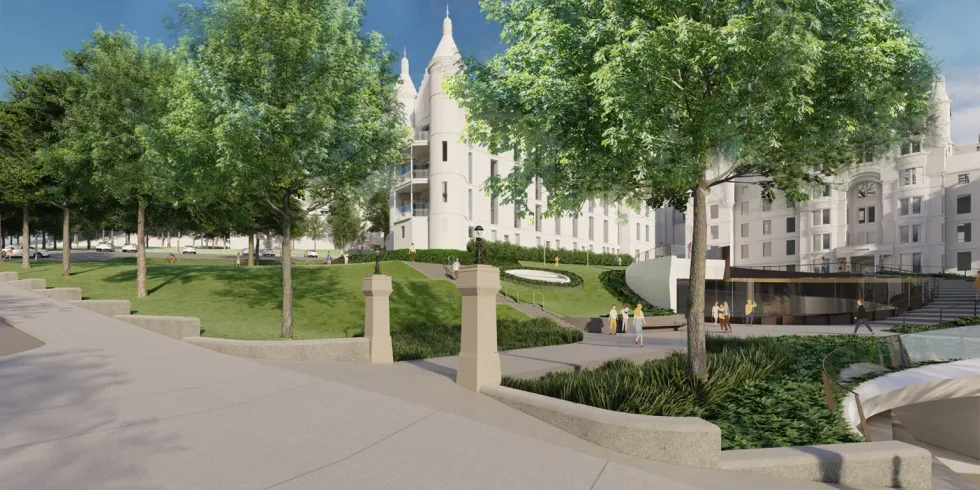
McGill promises that the buildings will feature "the most advanced standards of sustainable design and construction" as a model for how heritage sites can be "responsibly repurposed."
The University also says "special attention will be paid to the balance between functionality, nature, heritage and recognition of the Indigenous history of the land."
This statement comes amid ongoing court battles between an Indigenous group and McGill with the Société québécoise des infrastructures (SQI), the government body that owns the land.
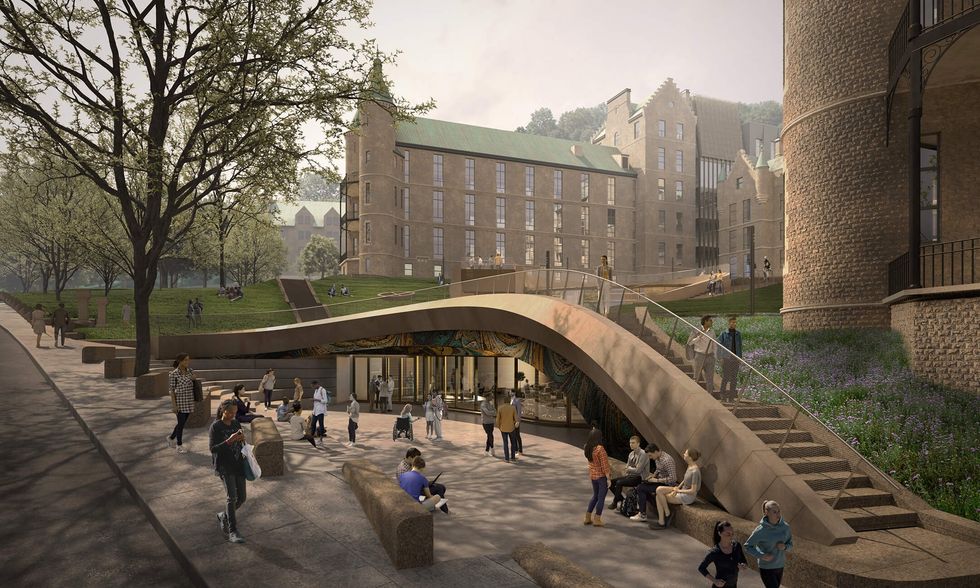
Since the project's proposal, the Kanien’kehá:ka Kahnistensera (Mohawk Mothers) has been sounding alarm bells regarding the possibility that the old Vic site contains unmarked remains of Indigenous children.
The Mohawk Mothers argue that not only was the site a pre-colonial Iroquoian burial ground, but also home to CIA-funded MK-ULTRA mind control experiments in the 1950s and '60s, which they say used Indigenous children as test subjects without their consent.
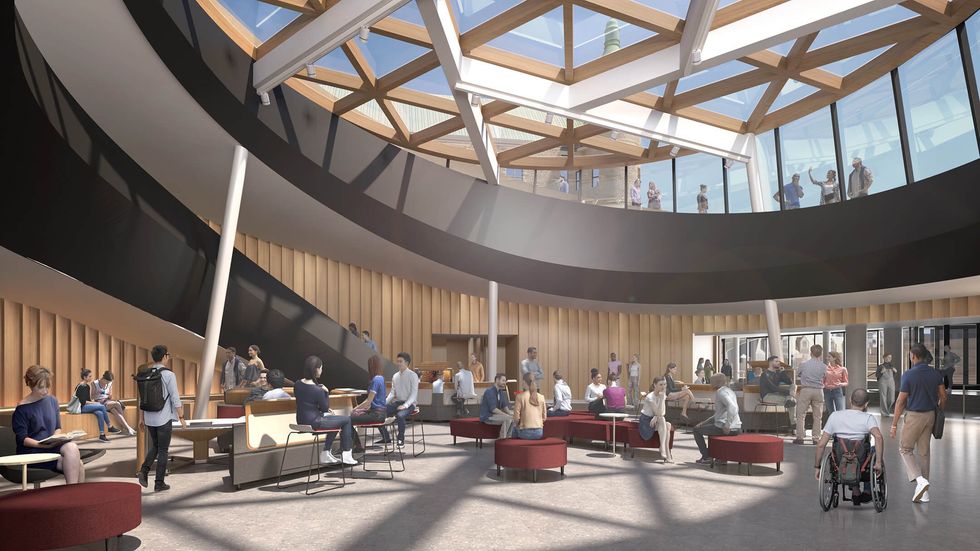
Both parties are set to return to court on June 11 to debate a potential appeal that would reduce the role of a court-mandated panel of experts charged with overseeing an archaeological investigation of the land prior to continued development.
Meanwhile, renovations are underway.
You can follow along for construction updates, progress and street closure notices on McGill's New Vic Project website.
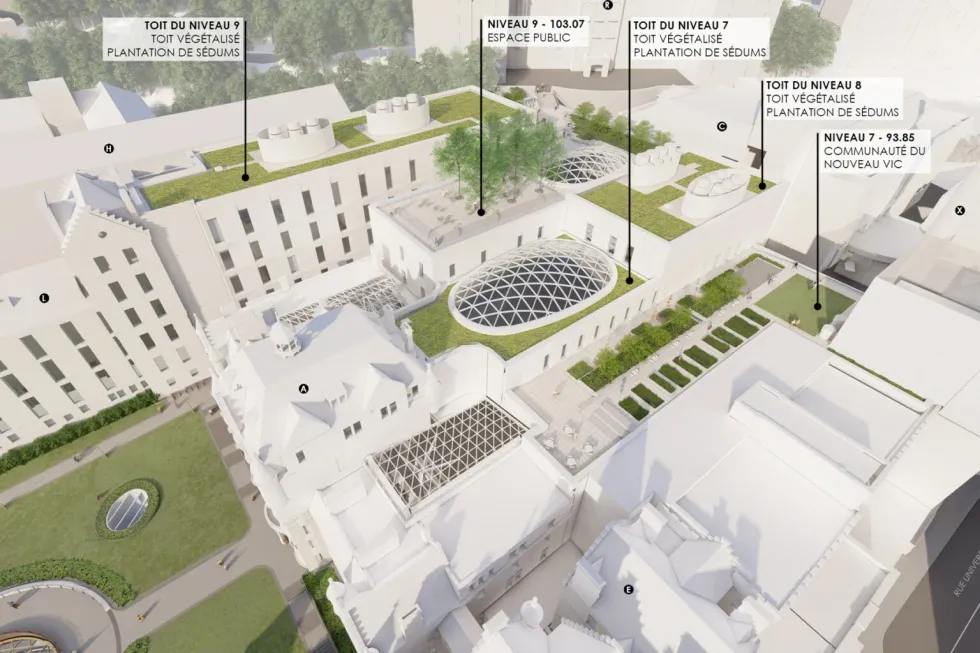
Besides the McGill campus, what's the plan for the rest of the old Vic site?
For starters, Mount Royal gets to absorb three swaths (roughly 30,000 square metres) of land behind the former hospital, as part of a park expansion to be completed by 2036.
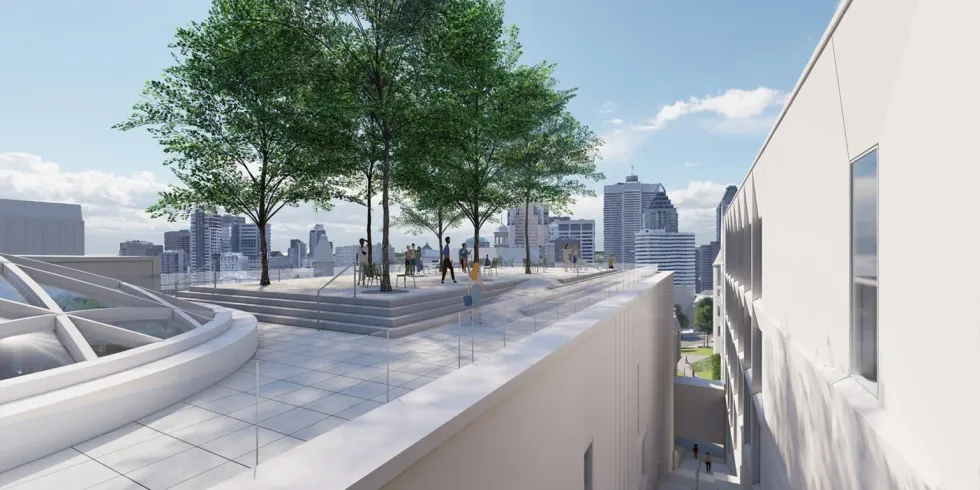
Quebec is also currently conducting a feasibility analysis to determine whether it should convert a portion of the site to an inter-university campus, which would include student residences, a research incubator, local shops and offices.
Finally, the Allan Memorial Institute buildings where the MK-ULTRA experiments took place are still in use, housing outpatient psychiatric services for the McGill University Health Centre. According to the SQI, the Centre "will continue to offer care at the Allan Memorial Institute" before reclassifying the buildings "in the coming years."

